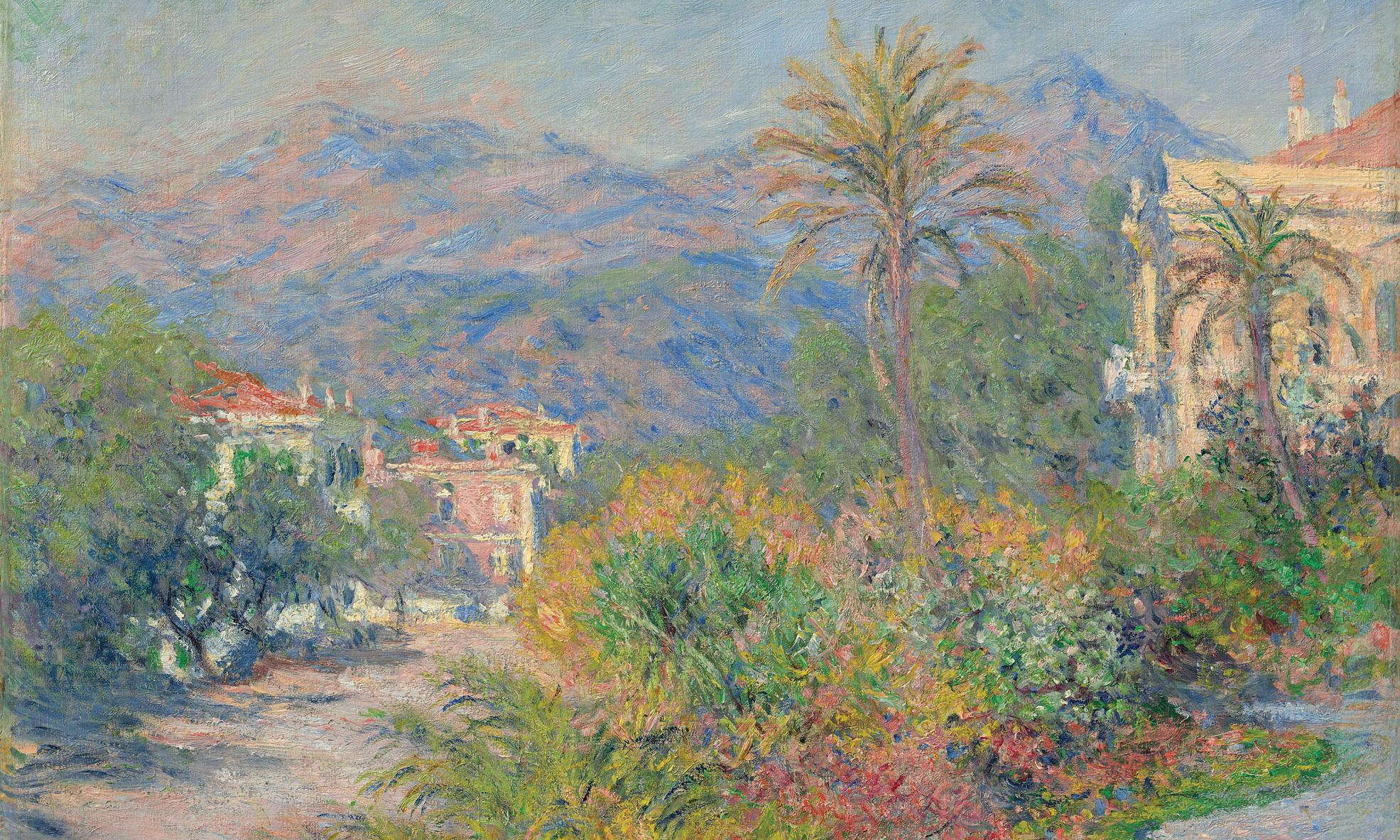Claude Monet’s Strada Romana à Bordighera was painted in 1884 in the Italian town near the French border © Musée d’Orsay, Dist. RMN-Grand Palais/Patrice Schmidt
Hasso Plattner Collection
In December 1883, Pierre-Auguste Renoir invited his friend Claude Monet to join him on a trip to explore the Mediterranean coast from Genoa to Marseilles, with a stopover in Roquebrune-Cap-Martin and Monaco. For Monet it turned out to be the first of three painting campaigns on the Franco-Italian Riviera over the next five years and, argues a new blockbuster show, a pivotal point in his artistic practice.
Monet in Full Light, at the Grimaldi Forum in Monaco, celebrates the 140th anniversary of that first trip. Conceived in collaboration with the Musée Marmottan Monet in Paris, it traces the 60-year arc of the artist’s career from 1860s landscapes around his native Le Havre to the 1920s water lily paintings in his Giverny garden, with a special focus on his Riviera sorties. Almost four years in the making, it will bring together nearly 100 paintings, including 44 from the Marmottan and others loaned by more than 30 private collections and museums in Europe, the US and Brazil.
Monet's Rocks on the Mediterranean Coast (1888) Columbus Museum of Art, Ohio, Bequest of Frederick W. Schumacher
A 140th anniversary might not seem to call for a celebration on this scale. But it suited both institutions says Marianne Mathieu, the scientific director of the Marmottan and the show’s curator. The Forum, the principality’s main congress centre and cultural space, needed a subject and material for this year’s iteration of its annual summer exhibition. The Marmottan had the expertise and the contacts to complement its own collection but lacked the space for such an ambitious show. “The anniversary makes sense as a reason for Monaco, and the Forum’s very large space is a key element for the concept, which is to shine a new analytical light on Monet’s work and practices,” Mathieu says.
As a northern painter, Monet was dazzled by his first encounter with the rich Mediterranean vegetation, colour and light, says the Marmottan’s director Érik Desmazières. The impact was so strong that he returned, this time alone, the next month to the area between Monaco and Bordighera in Italy for a deeper immersion. Planning to visit for three weeks, he stayed for three months. A third expedition, in 1888, took him to Antibes.
Monet’s Villas at Bordighera (1884) © Musée d’Orsay, Dist. RMN-Grand Palais/Patrice Schmidt
The colours, light and subject matter were not the only novelties in his Mediterranean work, says Mathieu. In his Riviera campaigns Monet started to paint multiple versions of the same scene or motif, observed from a fixed viewpoint, to capture the fleeting mutability of light within a stable formal composition. Views of the Moreno botanical gardens in Bordighera, or Dolceacqua’s hump-backed bridge can be seen as early examples of the signature practice seen in some of his later serial works such as his haystack, Rouen Cathedral and Giverny water lily paintings.
The Monaco exhibition will approach Monet’s work through the prism of light. “Monet does not paint a landscape, but an atmosphere,” Matthieu says. “Monet paints what he sees. But let’s not ask what he paints, rather when he paints it. The essential is not the motif, but the moment.”
• Monet in Full Light, Grimaldi Forum, Monaco, 8 July-3 September

